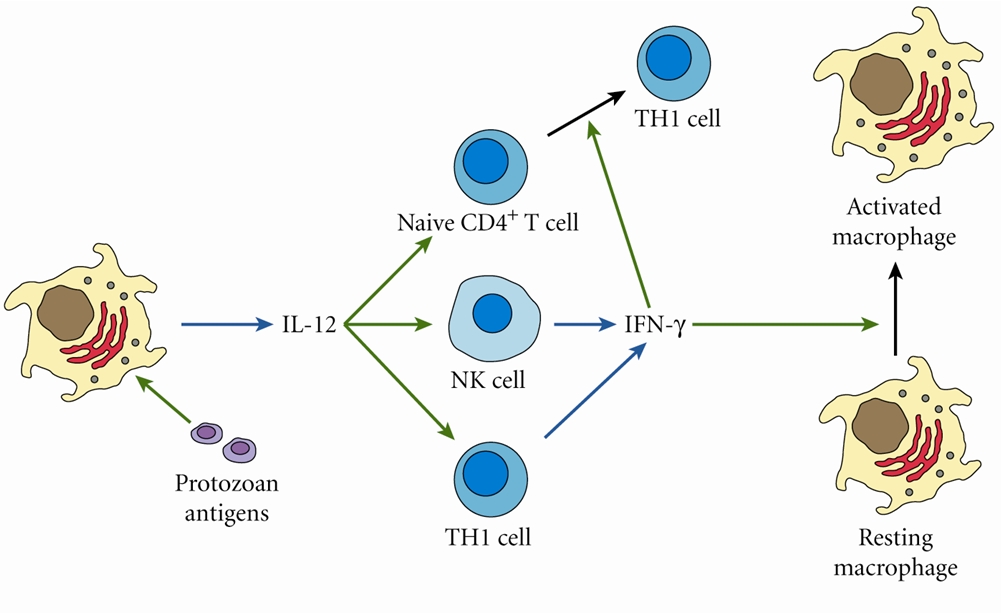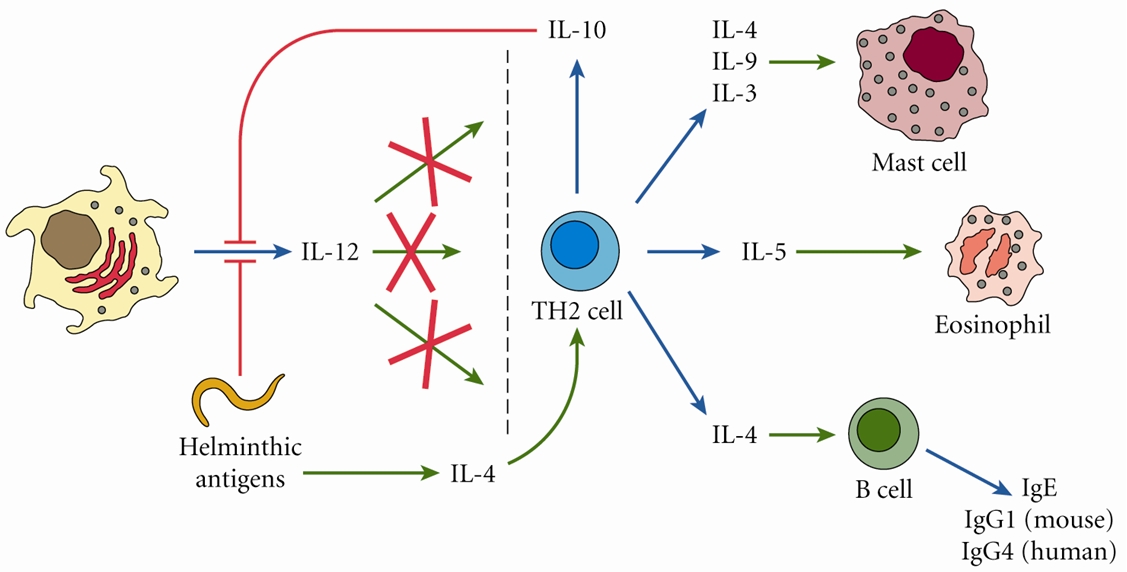|
Protozoan and Helminth Parasites
Contents For protozoan parasites, the activation of TH1 cells will lead to parasite destruction. Helminth parasites usually cause the induction of T-helper 2 (TH2) cells. TH2 cytokines are necessary for clearance of parasites from the gut only. Protozoan antigens induce the production of interleukin-12 (IL-12). IL-12 directly stimulates T-cells and NK cells to produce interferon-γ (IFN-γ). IFN-γ leads to disease resolution because it can activate macrophages (Figure 1). An activated macrophage is capable of releasing reactive oxygenated species (ROS), nitric oxide, and other potent chemicals that kill the pathogen on site. This chemical process is collectively known as oxidative burst. Figure 1. IL-12 and parasite infection. Early in infection with intracellular parasites, IL-12 is produced by phagocytic cells and induces the production of IFN-γ by natural killer (NK) cells and T cells. This early production of IFN-γ may help control infection by immediately activating macrophages. In addition, IL-12 and the IL-12-driven cytokine IFN-γ favour the development of parasite-specific TH1 cells, in addition to inducing the production of high levels of IFNγ by already differentiated TH1 cells. Helminth antigens do not induce the production of IL-12; instead, IL-4 is produced. IL-4, in turn, activates TH2 cells to produce IL-10; IL-10 further inhibits the production of IL-12 via a negative-feedback mechanism, in addition to other cytokines involved in a proinflammatory response (Figure 2). Recall that TH1 cells are involved in cell-mediated immunity while TH2 cells are involved in inflammation. As a result, IL-12 and IL-4 are key to determining immune responses to parasitic invasion. Figure 2. This early production of Il-12 is functionally analogous to the early induction of IL-4 synthesis by helminthic parasites, which drives TH2 development. Any helminthic parasite that does not induce the production of IL-12 may contribute to the development of TH2 as a default pathway. Click to enlarge. Infection with helminths result in high levels of immunoglobulin E (IgE) and eosinophils induced by TH2 cytokines. This makes sense because we just illustrated that when the IL-12 is inhibited, an alternate cytokine IL-4 is produced. Another effect of helminth infection is mast cell hyperplasia. IL-4 is thought to come from NK1.1 and T cells. There is evidence that there is also an IL-4 independent pathway that initiates TH2 development that is driven by IL-13.
The following is a list of parasites that have been profiled: |
click the animation to read more about the featured organism
|



